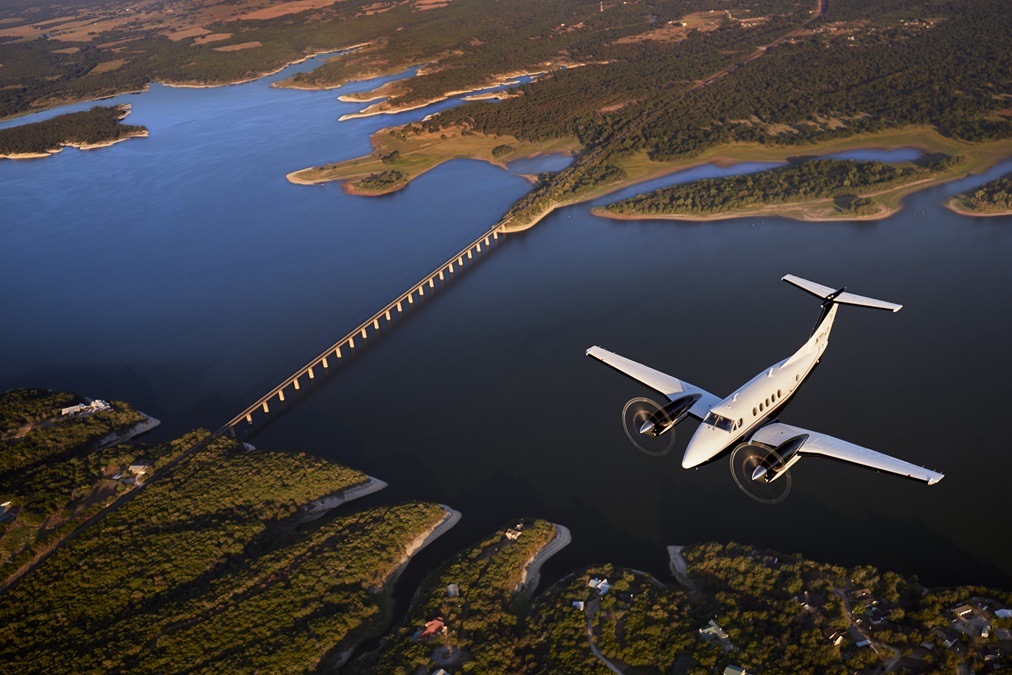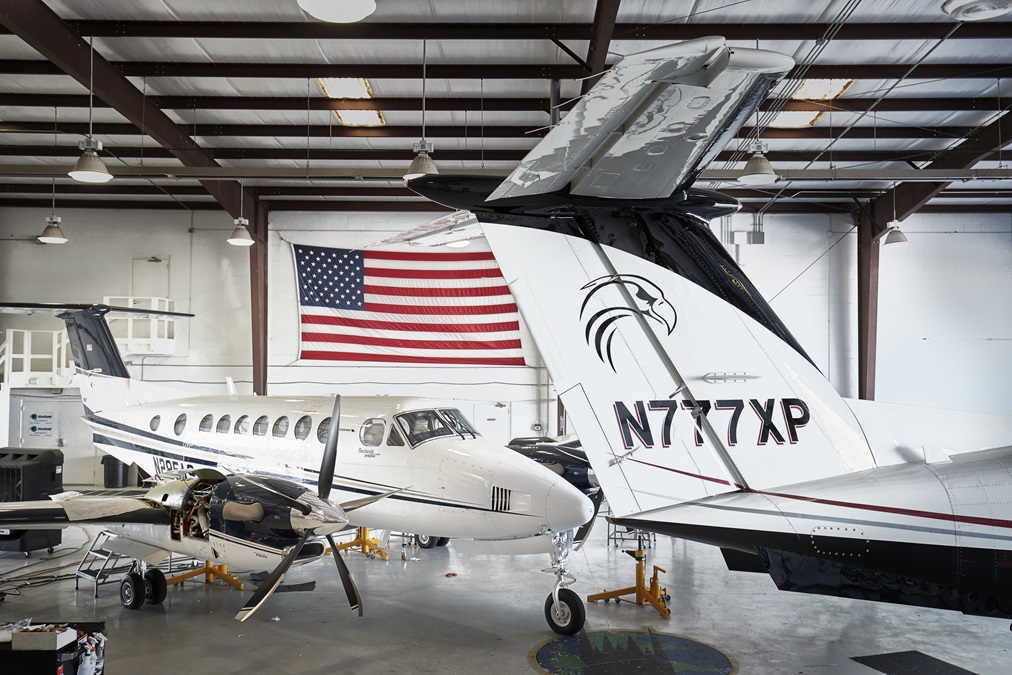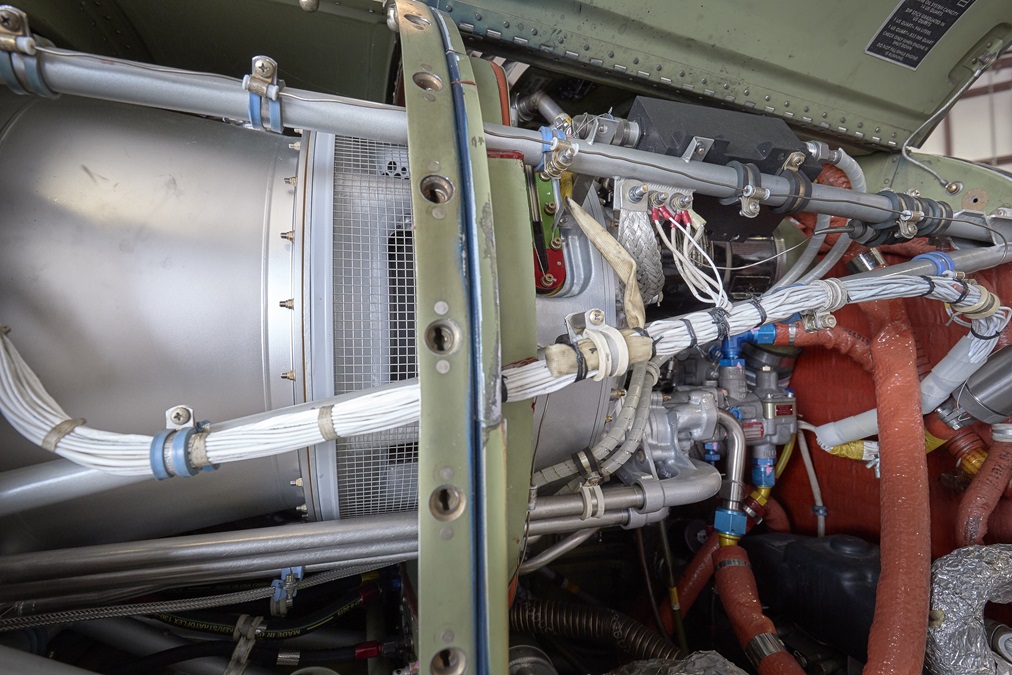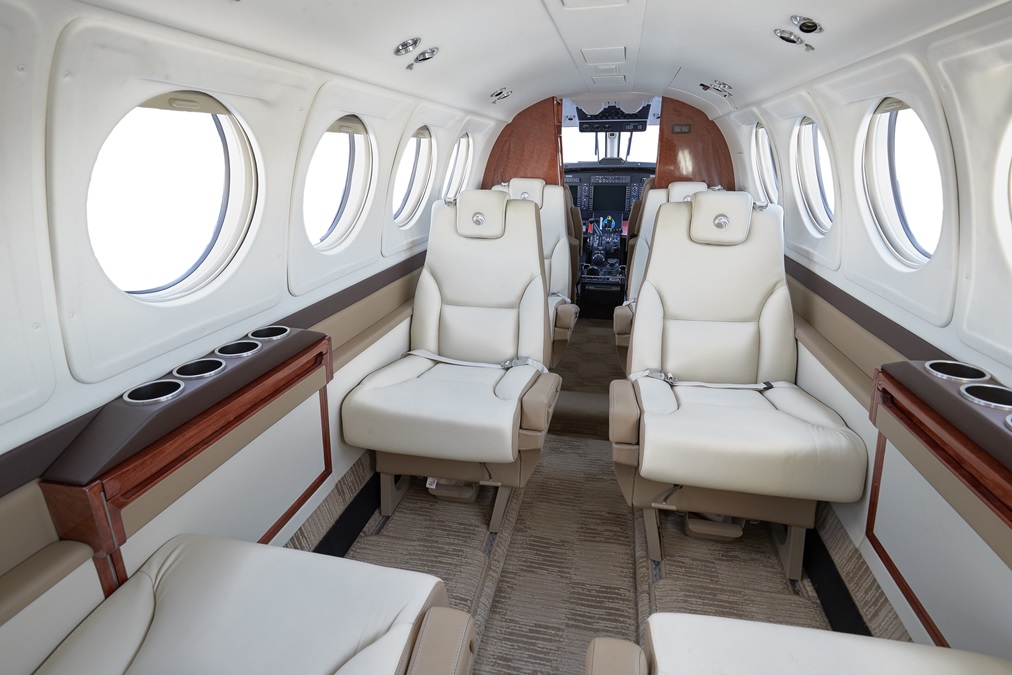King Air 300, reborn
There’s no substitute for more power
King Air 300









We’d get there in eight minutes, 10 seconds. Sure, our weight was on the light side, at 11,000 pounds. But most turboprop twins take twice that time to reach the same altitude—especially under ISA +20-degree conditions like those during my flight.
Like all Blackhawk engine modifications, the idea behind the company’s conversion of a King Air 300 is to install new Pratt & Whitney PT6A engines with more power and greater interstage turbine temperature (ITT) redline margins than the stock powerplants. Where plain-Jane King Air 300s have PT6A-60A engines with 820-degree ITT limits, the PT6A-67A engines Blackhawk installs can run with ITTs as high as 840 degrees. This higher ITT limit provides some important performance benefits. It means that the Blackhawk-modified King Air 300 can climb higher before the thinner air at altitude causes ITTs to rise to redline. The pilot of a stock King Air 300 will have to bring back the power levers at around 14,000 feet to prevent the ITTs from “temping out”; a -67A driver can climb through 20,000 to 22,000 feet before ITT redline becomes an issue.
While standard-issue King Air 300 engines are rated at 1,050 shaft horsepower, Blackhawk’s -67A is thermodynamically capable of producing 1,200 shp, thanks to a fourth axial compressor wheel (the stock engine has three). But to conform to the airplane’s type certificate, the engine’s torque is dialed back so that maximum power meets the rated 1,050-shp level. But those 20 degrees of extra ITT redline margin remain. The upshot? Blackhawk’s -67A is essentially loafing. It produces more power than the standard -60A engines at higher density altitudes and in cruise.
Cruise notes
FL280 is right at a turboprop engine’s sweet spot. It’s where the blend of speed, fuel flow, and true airspeed are at their optimum values. That’s where we leveled off north of Blackhawk’s home base at the Waco, Texas, airport. Blackhawk Regional Sales Manager Chris Dunkin was in the right seat showing me the ropes. For the first demonstration we took a look at all-out maximum cruise performance, pushed the power right up to the -67A’s ITT redlines, and waited for the gauges to settle down. The results were 92 percent torque; propellers at 1,500 rpm; 220 KIAS (a hair’s width below barber pole); and an outside air temperature of minus-12 degrees Celsius. The combination of which gave us a whopping 350 KTAS on a total fuel burn of 840 pph, or 63 gph per engine.
That’s why Blackhawk likes to call the King Air 300 conversion “the fastest King Air on the planet.”
Cruising at maximum ITT is a great way to realize jet-like speeds, but can be hard on engine life. For increased engine service life, Blackhawk’s airplane flight manual supplement says to use ITTs set at 820 degrees as recommended maximum cruise power settings. Page through the AFM and you’ll come up with 325 knots for maximum cruise at FL280, using 77-percent torque, and ISA +20 degree conditions, burning 367 pph/55 gph per side.
So much for the book numbers. But when Dunkin and I set power at 820 degrees ITT and 90-percent torque, we came up with a 347-knot true airspeed on a fuel burn of 420 pph (about 63 gph) per side. That’s 22 knots faster than Blackhawk’s own published numbers—and only three knots slower than a cruise at ITT redline. What gives?
A note in the manual gives the explanation. The published cruise speeds are based on the torque values of an engine near the end of its service life, or at its 3,600-hour recommended time between overhaul (TBO). By that time all the accumulated wear and tear on an engine will have reduced its maximum power output. New engines can produce more torque than shown in the AFM tables and still remain within ITT and Ng (gas generator) limits. This means that owners of new Blackhawk engines can set higher than published torque values and could easily turn in higher than published true airspeeds by as much as 10 knots. In other words, Blackhawk’s maximum cruise performance numbers are conservative.
Between the AFM and actual flight data, you get the idea that once above 12,000 feet there’s no maximum cruise power setting that delivers true airspeeds less than the magic 300-knot mark. Sure, the big -67As burn around 146 pph (about 22 gph) more fuel at maximum cruise settings than the -60A, but Blackhawk argues that by cruising 35 knots faster, there’s less time spent in the air; any extra fuel burn ends up being a wash.
The King Air 300
The King Air 300 has a reputation as a sort of oddball. It’s virtually the same as the King Air 350 and has the same PT6A-60A engines and fuel capacity, but its maximum takeoff weight is 1,000 pounds less (at 14,000 pounds), it can accommodate up to 15 seats compared to the 350’s 17, and only 247 were built—compared to 1,215 King Air 350s.
But lighter empty weights mean that King Air 300s can have higher full-fuel payloads than King Air 350s. And with a 1,000-pound lighter maximum takeoff weight, a fully loaded 300’s performance in climb and cruise is better than the 350’s. These attributes make it appealing to owner-pilots, and a good match for the Blackhawk engine upgrade.
You don’t see many standard King Airs cruising above 30,000 feet, let alone at the 300 and 350’s 35,000-foot maximum operating altitudes. That’s because they aren’t always able to reach those altitudes without leveling off on the way up to burn down fuel weight. That’s the reason why many King Airs can’t efficiently use RVSM airspace (the airspace from FL290 to FL410), assuming they have approval to use it. A standard King Air 300 will take 42 minutes to reach FL350; Blackhawk says its -67A-equipped 300 will get there in just 17 minutes. For owners with RVSM-approved King Airs, a Blackhawk upgrade can mean more fuel economy, higher speeds, and higher cruising altitudes above the weather.
New directions
Blackhawk typically sells 70 of its turboprop engine upgrades per year, most of them for King Airs. Traditionally, customers have been those facing overhauls of their worn-out engines, and wanting better performance. “Turboprops just weren’t optimized by the OEMs [original equipment manufacturers],” said Blackhawk President Jim Allmon. “This makes them great candidates for airframe and engine improvements.” It’s also made a great niche for Blackhawk.
That niche is expanding. The company now has its Phoenix program, which tacks a complete refurbishment—avionics, interior, and a new paint job—onto an engine upgrade. Where the -67A conversion by itself would cost $1.787 million for a 1987 King Air 300 like the one flown for this article, the Phoenix treatment would run $2.8 to $4 million with the Garmin G1000NXi avionics suite, depending on the airplane’s age and the time on the airframe. For a new interior and paint, the price runs around $100,000 to $125,000. The day of our visit, there was a nearly completed Phoenix King Air B200 with Bendix/King’s AeroVue integrated avionics suite. It sold for $3.1 million. And for the King Air 350, Blackhawk expects approval for installing Rockwell Collins’ Pro Line Fusion cockpits in the second quarter of 2020.
What else is new? Blackhawk recently doubled the size of its Waco facility, and has established a branch in Morgantown, Kentucky, that designs, builds, and certifies composite structures not only for Blackhawk’s conversions, but also makes the Tamarack Aerospace Group’s active winglets, and prototype structures for eVTOL designs. The company’s come a long way in its 20 years in the business, but still holds a firm grip on the turboprop conversion market.
Email [email protected]



